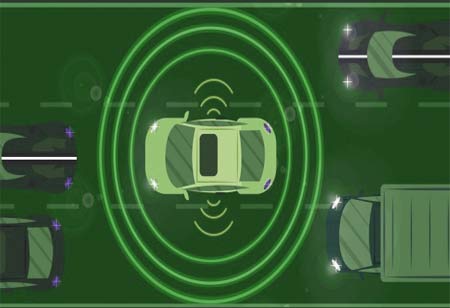Thank you for Subscribing to Electrical Business Review Weekly Brief
I agree We use cookies on this website to enhance your user experience. By clicking any link on this page you are giving your consent for us to set cookies. More info
Fast-Charging Revolution and Renewable Integration Spark Electric Vehicle Charging Evolution
The electric motor charging landscape is experiencing a dynamic transformation driven by groundbreaking advancements in fast-charging solutions

By
Electrical Business Review | Tuesday, August 29, 2023
Stay ahead of the industry with exclusive feature stories on the top companies, expert insights and the latest news delivered straight to your inbox. Subscribe today.
The electric vehicle (EV) revolution is accelerating at unprecedented speeds, and at the heart of this revolution lies the charging infrastructure that powers it all.
FREMONT, CA: The electric motor charging landscape is experiencing a dynamic transformation driven by groundbreaking advancements in fast-charging solutions, wireless charging, and the seamless integration of renewable energy sources. These innovations
are set to redefine the way we approach transportation and energy consumption, propelling us into a cleaner and more sustainable future.
Fast-charging technology, once a bottleneck for EV adoption due to lengthy charging times, has become a catalyst for change. Recent breakthroughs in ultra-fast charging turn hours-long charging sessions into brief pit stops. Leading companies in the EV sector have introduced charging stations that can deliver remarkable charging speeds, adding hundreds of miles of range in as little as 10 to 15 minutes. This leap in setting efficiency transforms the driving experience and eliminates range anxiety – a significant psychological barrier that has hindered EV adoption for years.
Wireless charging, an innovation that seemed like science fiction a decade ago, is rapidly becoming a reality. EV owners can now simply park their vehicles over specially designed charging pads embedded in the ground, and charging begins automatically. This technology offers convenience by eliminating the need for physical cables and opens up new urban planning and infrastructure design possibilities. Roads and parking lots can be equipped with these charging pads, turning them into charging zones and reducing the need for dedicated charging stations.
Renewable energy is also pivotal in shaping the future of electric motor charging. Charging stations are increasingly integrated with solar panels and wind turbines, enabling EVs to be powered by clean energy sources. This integration aligns with the global push to reduce carbon emissions and combat climate change. Excess energy generated by renewables during peak production periods can be stored in batteries and used to charge vehicles during periods of high demand or when renewable energy generation is low. This reduces the environmental impact of EV charging and contributes to grid stability.
Intelligent charging solutions are emerging as a crucial component of the charging ecosystem to address potential challenges associated with increased EV adoption. These solutions allow EVs, charging stations, and the grid to communicate and coordinate charging activities. By intelligently scheduling charging sessions during off-peak hours, the strain on the grid is minimised, and energy consumption becomes more efficient. Furthermore, vehicle-to-grid (V2G) technology turns EVs into mobile energy storage units. During peak demand periods, these vehicles can feed surplus energy back into the grid, supporting the energy infrastructure.
Governments and industries across the globe are recognizing the transformative impact of these advancements and are investing heavily in charging infrastructure expansion and research. Incentives for EV adoption and integrating renewable energy sources into national grids pave the way for a sustainable future. As the charging landscape evolves, the transition to electric mobility becomes more seamless and appealing to consumers.
In a world striving for a greener future, the rapid progress in electric motor charging technology is a testament to human innovation. With fast-charging revolutions, wireless charging convenience, and renewable energy integration, the road to a sustainable transportation system is paved, one innovative charge at a time.








